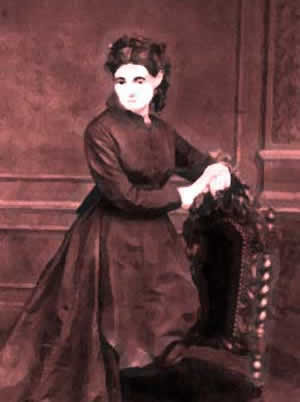For anyone drawn to the eerie charm of New Orleans, the LaLaurie Mansion at 1140 Royal Street stands as an undeniable focal point. Perhaps no other residence in the city evokes such a potent mix of fascination and dread. It’s a place whispered about in hushed tones, a landmark steeped in legend, drawing countless visitors eager to glimpse its shadowed façade.
While the magnificent St. Louis Cathedral and the famously haunted Muriel’s Restaurant are essential stops for tourists exploring our captivating city, the gray stone structure nestled at the corner of Royal and Governor Nicholls Streets in the French Quarter possesses an unmatched allure. Day and night, you’ll find people congregating across the street, often under the glow of Verti Marte’s sign, smartphones in hand, attempting to capture a piece of its mystique.
What are they hoping to find in their photos of 1140 Royal Street? Perhaps the elegant architecture, a relic of a bygone era. But for many, there’s a deeper, unspoken wish – to capture something more elusive: a ghostly orb flitting past a window, or even a spectral figure gazing out from the mansion’s depths.
As evening descends, the sidewalks around 1140 Royal Street become a bustling hub for ghost tours, each group eager to hear the chilling tales of Madame Delphine LaLaurie and the unspeakable acts she allegedly committed within those walls. But separating fact from fiction is key when exploring the dark history of 1140 Royal Street. What truly transpired behind those imposing doors?
 An early portrait of the infamous Delphine LaLaurie.
An early portrait of the infamous Delphine LaLaurie.
The Infamous Fire of 1834 at 1140 Royal Street: Myth and Mayhem
Local lore paints a grim picture of life at 1140 Royal Street, particularly leading up to the infamous events of March 1834. Madame Marie Delphine McCarty LaLaurie, her third husband Dr. Louis Leonard LaLaurie, and their son had established their residence in the newly constructed mansion in 1832. This address, 1140 Royal Street, soon became synonymous with scandal and horror.
Delphine and Louis were initially celebrated figures in New Orleans society, renowned for hosting lavish balls that were the envy of the city. Invitations were highly sought after, and those excluded were said to gather across the street, yearning for a glimpse of the opulent revelry within. However, the LaLauries’ social standing took a dark turn when whispers of their cruelty towards enslaved people began to circulate, eventually erupting into international infamy. The allegations centered on the torturous treatment of enslaved individuals within the walls of 1140 Royal Street.
One chilling tale recounts an incident involving a young enslaved girl, allegedly named Nina, attending to Delphine’s hair on the mansion’s third floor. When Nina inadvertently snagged a comb in a tangle, Delphine is said to have erupted in a fit of rage, pursuing the terrified girl through the house. In a desperate attempt to escape, Nina reportedly leaped from a window, falling three stories to her death.
Rumors suggest Delphine attempted to conceal Nina’s death by burying her body in the courtyard of 1140 Royal Street. However, authorities intervened, invoking the Code Noir, which outlined regulations concerning the treatment of enslaved people. Delphine received a reprimand, but local accounts suggest she remained unrepentant.
The narrative takes a dramatic turn in March 1834, during another of the LaLauries’ extravagant parties at 1140 Royal Street. As guests mingled, the smell of smoke filled the mansion. An enslaved woman was discovered chained to the kitchen stove, having intentionally set fire to the house.
Concerned citizens responded swiftly, extinguishing the flames and entering 1140 Royal Street. A horrifying discovery awaited them behind a locked attic door: a scene of unimaginable cruelty. Mutilated slaves were found, some chained, others subjected to gruesome experiments, and one reportedly confined to a box, limbs broken to fit the space.
Public outrage was immediate and intense. While the mob sought to confront Delphine and Louis, the couple escaped in a waiting carriage. The rescued slaves were taken to the Cabildo, where demands for justice and reparations were voiced. Frustration mounted when the LaLauries remained at large. The following day, an enraged mob descended upon 1140 Royal Street, vandalizing the mansion in a furious display of retribution.
Delphine LaLaurie vanished from public life, rumored to have fled to Paris, France, where she supposedly died. Almost instantly, tales of ghostly activity at the LaLaurie Mansion began to surface, cementing 1140 Royal Street as a site of enduring paranormal intrigue.
The Sobering Truth Behind the LaLaurie Mansion at 1140 Royal Street
While the sensational stories surrounding 1140 Royal Street are captivating, the historical reality is somewhat different. Delphine LaLaurie was indeed guilty of mistreating her slaves, but the more grotesque details often associated with the LaLaurie Mansion are likely exaggerations. Accounts of extreme mutilations and bizarre experiments are not substantiated by historical records. Instead, the documented abuses point to severe neglect and malnourishment, leading to starvation and death among her enslaved people.
The claim that Dr. Louis Leonard LaLaurie was complicit in the torture is also questionable. Evidence suggests he had become disillusioned with Delphine, reportedly due to her vanity and volatile temperament, and had moved out of 1140 Royal Street months before the fire. Their marriage itself was allegedly born of scandal, with Louis being pressured to marry Delphine after she became pregnant. Letters from the time suggest a lack of affection and a sense of obligation rather than love in their union.
Adding another layer of complexity, Delphine LaLaurie’s half-sister, Marie, was of mixed-race heritage. Delphine and her brother acted as godparents to Marie, providing her with a home and enslaved people, and seemingly treated her with kindness. This detail challenges the simplistic portrayal of Delphine as a purely evil figure.
The truth, though less sensational, is still disturbing. Delphine LaLaurie’s cruelty, while perhaps not as outlandish as some legends suggest, was nonetheless reprehensible. Her actions, though arguably within the spectrum of abuse tolerated in that era, crossed a line that led to public exposure and condemnation, branding her as a “monster” in the eyes of the world.
Over time, the myth of the “Mad” Delphine LaLaurie, residing at 1140 Royal Street, took on a life of its own, fueled by fictionalized accounts. Modern media, such as American Horror Story: Coven, further solidified her image as a monstrous figure in popular culture.
Today, the name LaLaurie evokes fear, fascination, and revulsion. In New Orleans, mention of a “Haunted House” invariably leads to discussions of the LaLaurie Mansion. Stories persist of suicides linked to the mansion’s dark energy and of people feeling the presence of unseen forces. Past owners have reported unexplained sounds of moaning and weeping. Rumors even claim that human remains were discovered beneath the floors during renovations decades after the LaLauries’ departure from 1140 Royal Street.
Records indicate a high turnover of residents at 1140 Royal Street since 1834, with no one residing there for more than five years consecutively. Anecdotes link misfortune, including financial ruin (famously Nicolas Cage) and mental instability, to former occupants of the property.
This accumulation of history, myth, and unsettling accounts leaves many wondering: what is the current status of 1140 Royal Street?
 A photo of the very haunted LaLaurie Mansion on Royal Street, which is located in the French Quarter neighborhood of New Orleans Louisiana
A photo of the very haunted LaLaurie Mansion on Royal Street, which is located in the French Quarter neighborhood of New Orleans Louisiana
Why 1140 Royal Street Remains Off-Limits: No Entry to the LaLaurie Mansion
The question on many minds is: can you go inside the LaLaurie Mansion at 1140 Royal Street? The direct answer is no, public access is not permitted.
The longer explanation, frequently provided by tour guides and local experts, is that the LaLaurie Mansion is privately owned. Since 2013, it has been the residence of an oil tycoon from Texas who maintains a strict policy against public entry. Reports suggest that the owner and his wife actively avoid tour groups, retreating inside if they notice gatherings forming outside 1140 Royal Street.
This private status meant that even for the filming of American Horror Story: Coven (Season 3), interior shots of the LaLaurie Mansion were filmed elsewhere, at the Hermann-Grima House Museum on St. Louis Street in the French Quarter. Ironically, exterior shots for the show were filmed just two doors down from the actual LaLaurie Mansion, at the Gallier House Museum. Period details were added to the street to create a 19th-century ambiance, and these two museum locations were combined to represent the LaLaurie Mansion on screen.
No paranormal investigations have ever been authorized at 1140 Royal Street, and it seems unlikely that access will be granted unless the property changes ownership. For those captivated by the LaLaurie Mansion’s history and hauntings, experiencing it from the outside remains the only option. This inaccessibility adds to the mansion’s mystique, leaving enthusiasts to observe from afar, perpetually seeking a way to penetrate its enigmatic walls.
Be Wary of Misleading Tour Promises Regarding 1140 Royal Street
It’s crucial to be aware that no ghost tours legitimately enter the LaLaurie Mansion at 1140 Royal Street. Any tour claiming to offer entry is misrepresenting their offering to attract customers. While such tours might include visits to other locations, they will not provide access to 1140 Royal Street. This tactic preys on the hopes of visitors and can lead to disappointment.
It is widely known within New Orleans that the LaLaurie Mansion is strictly private. Tourists unfamiliar with this fact may be easily misled by unscrupulous tour operators capitalizing on the mansion’s allure. Being promised something undeliverable is a frustrating experience, especially when it comes to such a highly anticipated site.
Exploring Around 1140 Royal Street and Beyond
While entry to 1140 Royal Street is impossible, those interested in the LaLaurie Mansion and its historical context have other avenues to explore. For fans of American Horror Story, visiting the Hermann-Grima House Museum, used for interior filming, offers a tangible connection to the show. The Buckner Mansion, another filming location (representing the school in Coven), can be viewed from the outside Uptown.
The Hermann-Grima House Museum, a historic house museum with artifacts from the 1850s and its own ghost stories, is a worthwhile destination. It’s featured on the Killers and Thrillers Tour, although interior visits require daytime admission.
When visiting 1140 Royal Street, take note of the Gallier House Museum, located just two doors down. This building served as the exterior for the LaLaurie Mansion in American Horror Story and is also open for public tours.
For a deeper understanding of the true history behind the LaLaurie Mansion and other New Orleans mysteries, consider taking a tour with Ghost City Tours. The Ghost of New Orleans Tour and the Bad Bitches of New Orleans Ghost Tour offer meticulously researched narratives that separate fact from fiction. If you seek the authentic story of 1140 Royal Street and its infamous resident, Ghost City Tours provides an insightful and engaging experience.
In conclusion, while the LaLaurie Mansion at 1140 Royal Street remains inaccessible to the public, its mystique endures. Exploring its history and the surrounding sites offers a richer understanding of New Orleans’ haunted past. And for those seeking the true stories behind the legends, guided tours provide the key to unlocking the secrets of this captivating city.


